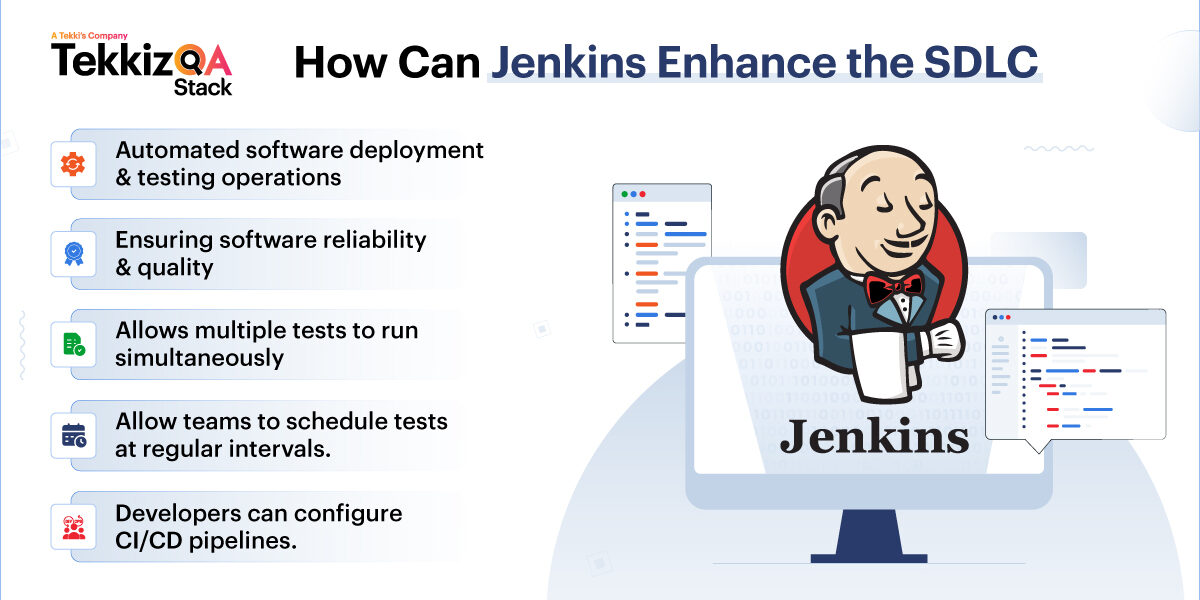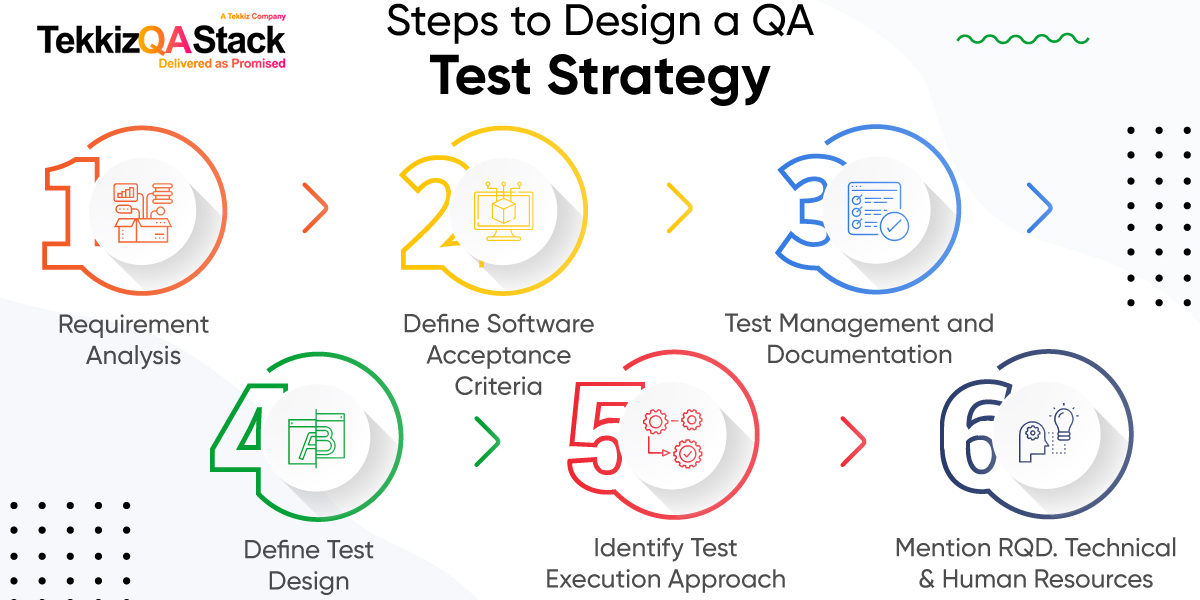Introduction Of QA
Quality Assurance is a methodology to ensure the quality of a software product. Quality Control (QC) is a subset of Quality Assurance, and software testing falls under QC. It includes the testing of the software for the errors and bugs to maintain the quality of the product so that the software is bug-free and meets the requirements of the client.
It ensures that the client is satisfied with the software delivered and the software is fulfilling the requirements of the clients without any bugs. The documentation and QA report are also maintained under the QA process. It includes documentation throughout the different phases of the Software Development Life Cycle (SDLC). In the QA process, test strategy, test plans, test scenarios and test cases are also developed to track the status of the testing process that comes under the QA documentation.
QA is a major part of the Software Development Life Cycle (SDLC). We ensure that the software meets all the client requirements by adding QA report. In SDLC testing plays a major role, where testers check the software continuously and try to fill the gaps between the client and the developers. Stages of software development life cycle are:
Stage 1: Requirement Analysis
In this step, developers analyze the requirements specified by the clients for the development of the software. The development of the software is planned after the requirements have been properly analysed.
Stage 2: Designing
In this stage, the design of the software is produced after analyzing the requirements properly specified in the Software Requirements Specification (SRS Document).
Stage 3: Development
In this stage development is start after analyzing the design which is created after reading the SRS Document provided by the client. Here developer choose tech stack in which software is developed and also choose IDE’s For the better understanding of code. Some popular languages like C/C++, Python, Java, etc. are put into use as per the software regulations.
Stage 4: Testing
An integral component of the software development life cycle is software documentation. An effective document serves as a tool and a repository for the knowledge needed to understand software functionalities, processes, and maintenance. Information about how to operate the product is also included in the documentation. Training is an effort to raise an employee’s capacity for learning-typically by altering his mindset and advancing his knowledge and abilities-to enhance present or future worker efficiency.
Stage 5: Deployment
At this stage the software product needs to be deployed to the production environment in order for customers to begin using the product. On the other hand, a lot of organization decide to deploy the product across several environments, such testing or staging.
Stage 6: Maintenance
Sustaining software integrity after deployment requires maintenance in the SDLC, which includes corrective, preventive and adaptive actions. While DevOps and agile approaches speed up maintenance, version control systems and CI/CD pipelines simplify workflows and guarantee the longevity of software.
Now let’s discuss the importance of QA in the life cycle of software development .
1. The Importance Of QA In Software Development
QA maintains the quality of the product to ensure that the product delivered is bug free and meets the customer’s requirements. The importance of QA in software development process is given below:
Identifying Bugs And Defects:
In software testing, by using different types of testing techniques, we can ensure that the product developed is bug-free. QA teams execute various test cases and scripts designed to test the functionality, performance, and usability of the software product.
Enhancing The User Experience:
QA ensures that the software meets user expectations in terms of functionality, usability, and performance. By using different testing techniques, like load testing and performance testing, we can check the performance of the software and also test the load handling ability of the software under different loads and circumstances.
Ensuring The Quality Of The Software Product:
The QA process maintains the quality of the software by ensuring that the software produced meets the requirements of the customer. It also ensures that the software is bug-free and each section of the software is working properly. Testers also test the user interface of the software to make sure it’s easy to use and looks attractive to users or clients.
2. Reporting:
Reporting in Quality Assurance (QA) involves the documentation of information related to the software development process. Here’s an overview of the reporting activities that take place in the QA process:
Test Reports:
These reports provide a summary of the testing outcomes. It includes details such as the number of tests executed, the number of tests passed, and the number of tests failed, as well as any bugs encountered during testing.
Defect Reports:
They document the details of identified defects, including their priority, status, and severity. The defect reports help track and manage issues during the software development process.
Progress Reports:
It provides reports on the status of the test execution process, and the overall quality of the project. In the QA process, test strategy, test plans, test scenarios, and test cases are also developed to track the status of the testing process.
Compliance Reports:
It makes sure that the company is following all the rules and standards set for making quality software, helping to maintain consistency and quality throughout the development process.
3. QA Documentation In SDLC:
QA documentation includes the documents that outline the QA processes, standards, and guidelines within an organization. These documents are important for ensuring the reliability, transparency, and quality of the software product throughout the development lifecycle. The common types of QA documentation are described below:
Test Plan:
This document is created at the initial stage of the project when the requirements have been collected and analyzed properly. This document describes the scope of the project, which means it acts as a roadmap for testing process. It includes complete guidelines for when to test and which testing approaches should be used during the testing process.
Test Scenario:
The test scenario gives an overview of what needs to be tested by the testing team. Test cases are derived from the test scenarios. A test scenario describes which component of the software should be tested.
Test Cases:
Test cases include information such as expected results and actual results during the testing process. Test cases also consist of step-by-step instructions for executing the test. By executing test cases, testers compare the actual results with the expected results.
Bug Sheet:
A bug report is also known as a defect report. It includes a complete description of the bugs identified in the software product during the testing process. Bug reports are a very essential component of the QA documentation process. They give a better understanding of bugs to the development team as they contain detailed information about the bugs, including their priority level and description.
4. Bug Tracking Tools
There are a lot of tools available on the market for tracking the bug. But Jira is the most popular tool available on the market. Most companies use this tool because it is easy to use. In Jira, testers are able to write test cases with the help of test management tools, i.e., Zephyr and X-ray. In bug tracking tools, testers track the bug and monitor it. It is a very important and very complicated process. Sometimes there are hundreds of bugs that are very difficult to remember, so testers use bug-tracking tools to maintain the bugs and write test cases.
5. How To Track The Bug
When the application does not work as per the client, it is known as a bug. Tracking the bugs basically means finding, monitoring, and reporting them so that they can be resolved. There are multiple stages in a bug’s lifespan:
New:
When a new bug is identified by a tester, it is in a new state.
Assigned:
When a new bug is found, it is assigned to the development team so that it can be resolved.
Open:
When the development team is working on the bug, it is in an open state. Sometimes the bug is found inappropriate, and then it is declared in the rejected state by the development team.
Fixed:
When the changes have been made to the code to fix the bug, then the bug is in the fixed state.
Pending Request:
When the bug is completed, the developer team passes the new code to the testing team for retesting. At that time, the software is pending for re-testing, so the status is assigned as ‘Pending Retest’.
Retest:
At this stage, the tester retests the software to check whether the bug is fixed by the developer or not, and the status is marked as ‘Retesting’.
Reopen:
After ‘Retesting’, if the testing team still finds the same bug, then the status of the bug is again changed to ‘Reopened’. Once again, the bug goes to the ‘Open’ state.
Verified:
When the bug has been retested and verified by a software tester, it is in a verified state.
Closed:
It is the final stage of the bug cycle. When the bug has been completely resolved, it is in a closed state.
Bugs must be solved and prioritized according to their priority level, which can be categorized below:
Low:
These bugs have a very minimal impact on the software’s functionality and don’t affect the user experience.
High:
These bugs have a very large impact on the functionality of the software. These bugs can affect the major functionality of the software.
Critical:
These bugs cause complete failure of the system, e.g., security vulnerabilities.
In conclusion
Quality Assurance (QA) plays a very important role in ensuring the quality and reliability of software products. QA teams ensure that software meets client requirements and enhances the user experience by providing bug-free software to clients. By maintaining quality standards throughout the development lifecycle, QA ensures satisfaction among clients and users, making it an essential component of software development.




